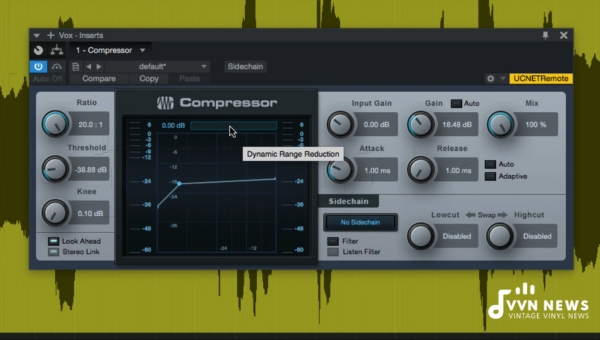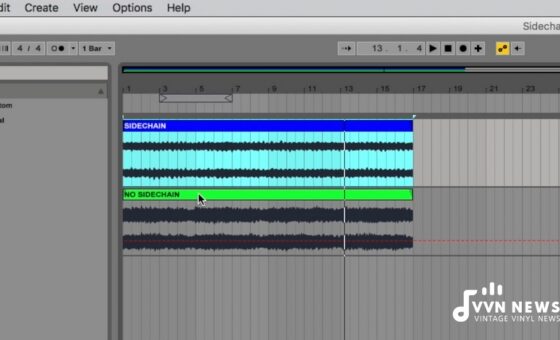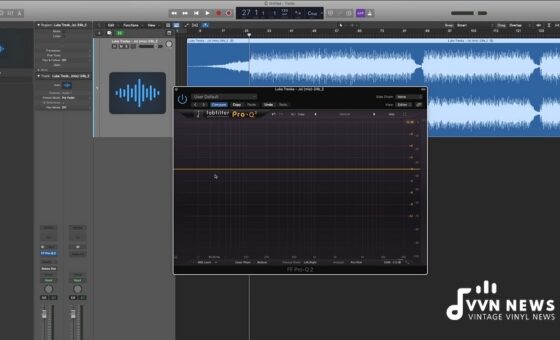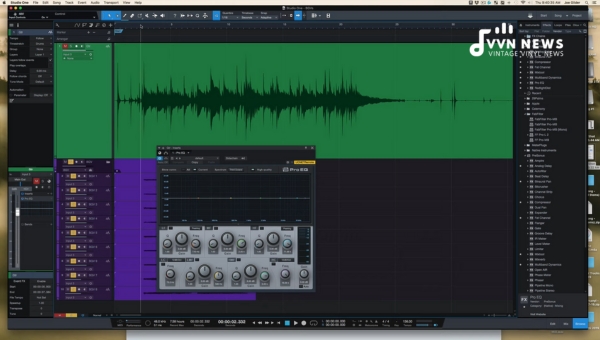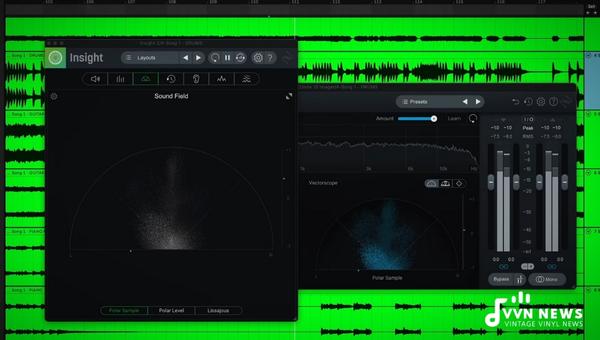Compression technology has been around for decades, proving instrumental in diverse industries.
Despite its widespread use and general familiarity, numerous misconceptions or “compression myths & mistruths” prevail around how this process works and its impacts.
Though these myths may seem trivial, they can limit our understanding and potential compression technology uses. In this article, I’ll unmask 15 common myths about compression technology that might lead us astray.
Falling prey to these falsities hampers technological progress and hinders practical work productivity.
Striking the right balance between reality and perceptions is essential for taking full advantage of this technique.
Let’s shed some light on the truths behind these misconceptions, debunking commonly held beliefs with facts and evidence.
15 Compression Myths & Mistruths
Our understanding of established tools and techniques often gets distorted in an era defined by technological development.
Compression, a cornerstone of many industries, is riddled with countless myths and misperceptions.
Let’s remove some of these fallacious beliefs and delve into their realities.
1. More Compression Equals Better Sound
One of the most widely circulated myths about compression suggests that more reduction equates to a better sound.
It’s a little like saying the more salt you put in your food, the tastier it will be. In truth, overcompression can lead to auditory distortion and an unnatural-sounding mix.
Compression should be applied judiciously and purposefully, like seasoning in a recipe, to bring out inherent flavors rather than overwhelming them.
Moreover, too much compression can inadvertently eliminate dynamic contrast within a track.
An integral part of sonic storytelling is maintaining moment-to-moment variety and contrast in volume levels; excessive compression mitigates this crucial aspect.
2. Compression Will Fix a Bad Mix
This myth resembles believing that a band-aid will fix a broken arm.
Compression is a powerful tool when used correctly, but expecting it to transform an inherently wrong mix into high-quality production is wishful thinking.
Creating music demands careful arrangement, balance, and tone that resonates from note to note, beat to beat.
Essentially, all musical elements must harmoniously interact for the mix to qualify as good. If these fundamentals are flawed or missing, no amount of compression will rectify their absence.
Also Read: Can We Mix Bass In Stereo? 2025 [Mixing The Kick Drum & Bass]
3. Compress Everything in Your Mix
A prevailing myth regarding compression is that it’s a one-size-fits-all solution. It states you should apply compression to every component of your mix.
Nothing could be further from the truth. In reality, indiscriminate compression across all tracks can often lead to an unbalanced and unnatural sound.
Why is it so? Well, tracks in a mix can vary widely, and each could require different amounts of compression.
Some elements may need a heavy-handed approach, while others might perform better with the gentlest touch or no compression.
Sure sounds, like acoustic guitars or vocals, might lose important tonal nuances with too much reduction.
Not every track needs the same type of treatment. For instance, a kick drum requires more attention than a delicate acoustic guitar line.
Music is an art, so no hard and fast rule applies to all situations uniformly.
Also Read: 30 Crazy Science-Supported Facts About Music [2025 Latest]
4. Attack and Release Settings Don’t Matter
Another common mistruth among users states that attack and release settings on a compressor don’t matter much; this notion couldn’t be more misguided.
The attack time determines how quickly the compressor starts reducing gain after your signal exceeds the threshold level; conversely, the release time determines how long your compressor takes to stop reducing growth once your password has dropped below the threshold.
These parameters greatly influence how your compressor shapes transients: Attack times directly impact initial transient details, while release times manage sustained periods of an audio signal.
Misjudging these settings could result in crucial elements being squashed or distorted due to improper setup.
5. Use Compression on Every Track
Finally comes another myth—every track in your mix must undergo compression.
While it’s true that compressors can enhance some aspects of audio quality (like improving tonal balance or controlling dynamic range), they aren’t needed universally on every single track.
For instance, dynamic tracks like vocals or solo instruments might benefit from some compression level.
On the other hand, elements with minimal dynamic range, such as a steady synth pad or a regularly played hi-hat cymbal, might require minimal to no compression.
It’s essential to recognize that indiscriminate compression application across all tracks can lead to over-compression—a state where all nuance and dynamics are squeezed out of a mix.
Therefore, constantly assess whether each sound source requires compression before diving headfirst.
6. The Louder, the Better
The belief that louder always equates to better is among the more enduring myths in sound engineering.
Yes, volume adds to the richness and depth of a sound mix, but cranking up the decibels isn’t always the wisest call.
It’s all about balance and understanding how elements interact with one another in a mix.
Raising volumes too high can distort audio output, making it harsh and tiring to listeners’ ears.
Of course, this isn’t an indictment against loudness per se- instead, it’s a reminder that carefully handled dynamics create impactful mixes without resorting to outright loudness competitions.
Embracing loudness normalization, a practice where digital audio systems match levels for consistency of volume across various tracks or broadcasts, is one way to manage loudness effectively.
Also Read: Billionaire Music Supergroup Formation [What It Means For The Industry]
7. Set It and Forget It
The “set it and forget it” mindset is another widespread misconception in audio production circles.
While compression settings can often be forgotten once set, this approach hardly guarantees optimal results every time.
Compression isn’t like putting your track on an assembly line where each will come out uniformly perfect – it’s more like crafting individual pottery pieces.
Different recordings will invariably require tailored adjustments – especially within varying contexts or genres.
Engineers must take time to understand and experiment with their compressor controls to shape their sound artfully.
8. You Don’t Need Compression for Vocals
This particular myth couldn’t be further from the truth! Vocals, one of the most dynamic elements in any track, can significantly benefit from well-applied compression.
Vocals often span a wide dynamic range- from softer verses to powerful choruses- which, if not appropriately managed, can lead to inconsistent listening experiences.
The proper compression ensures that soft passages are audibly clear while preventing louder sections from overwhelming your mix- providing an overall balanced sound.
Moreover, compression can add to the character of vocal performance, enhancing expressiveness and helping the vocals consistently find their place in the mix.
Skimping compression on vocals could result in losing that all-important lyrical message amidst instruments.
9. Compressors Are Only for Mixing
While commonly used in the mixing process, compressors also serve other areas of music production.
Acting as dynamic tools, compressors shape, control, and even enhance component sounds within a track. This makes them useful for both live performances and studio recordings.
For instance, during live performances, compressors help manage sudden spikes in volume, keeping unwanted noise at bay while preserving the integrity of the overall sound focus.
In studio recordings, beyond mixing uses, compressors aid in capturing the essential character of an instrument or vocal track before it enters the mixing stage.
Moreover, in mastering, a separate stage following mixing, compression plays a pivotal role in ensuring consistent volume across all tracks on an album without sacrificing dynamic range or causing distortion.
10. Compression Kills Dynamics Completely
Let’s refute this myth: Compression does not eradicate dynamics; it manages them.
If used properly, compression enhances a mix’s overall dynamic structure. The goal is to regulate extreme dynamics to prevent overpowering moments from bombarding listeners and maintain balance within a track.
Heavy-handed or inappropriate use of compression can certainly reduce dynamics significantly – even to the point they become barely noticeable – but this isn’t an inherent failing of reduction itself.
Subtlety is vital; a slight reduction can introduce listeners to intimate details of an instrument’s character that might otherwise get lost within a mix’s larger dynamic context.
11. Always Start with a Ratio of 4:1
The ratio setting on your compressor is not a one-size-fits-all sort of parameter.
And yet, another common mistruth suggests that you should always start with a ratio of 4:1.
This is somewhat arbitrary since no universal rule dictates this as optimum or standard.
Remember that each mix might call for different settings depending upon its unique attributes and the ultimate desired effect on sound quality – everything from very light compression (ratios less than 2:1) to heavy compression (ratios higher than 10:1).
Treating the ratio as a fixed setting can limit your ability to draw out a track’s potential and prevent a nuanced understanding of how varying compression ratios can shape your mix.
12. Mastering Compression Is the Same as Mixing Compression
Contrary to common belief, mastering and mixing compression are not interchangeable; they serve different roles in the production process. The idea they are equivalent is a common myth.
Mixing compression balances individual tracks within a mix, dealing with specific elements such as vocals, percussion, or guitar.
This targeted technique helps to smooth out any inconsistencies and makes each track sit better within the mix.
On the other hand, mastering compression takes a broader view. Here we’re focused on treating the mix as a whole rather than its components.
The intent is to provide consistency and polish to the entire track or album to sound cohesive and professional across varied playback systems.
Viewing both techniques as two distinct steps in the audio production process triggering different results is critical.
Understanding this distinction can prevent misusing these compression techniques and contribute to achieving high-quality sound productivity.
Also Read: 15 Best Vocal Compressors of 2025 [Improve Your Vocal Mixing]
13. You Can’t Over-Compress Digital Audio
Contrastingly, digital audio can be over-compressed! While digital technology might be more forgiving than analog regarding dynamic range, repeated over-compression leads to ‘compressed’ sound characterized by a lack of emotional depth and warmth, known as data reduction at times.
Despite what some may think, digital audio isn’t invincible when faced with excessive compression.
Using this tool wisely is essential, even when working with digital tracks.
14. Vocalists Should Never Hear Compression
The perception that vocalists should never hear compression relies on an outdated approach to recording.
Today’s vocalists often utilize effects, including reverb, delay, and compression, during their performances for technical enhancement and artistic expression.
Depending upon genre or style, hearing compression can provide helpful feedback during performance, contributing to more emotive vocal recordings.
The key remains judicious use of compression – it should enhance the performance, not distort or overshadow it.
15. Compression Substitutes for Proper Arrangement
This is a classic case of confusing the tool with the craft. Compression can enhance audio material but cannot substitute proper arrangement.
Many beginner producers and engineers fall into the trap containing thoughts like ‘I’ll fix it in the mix’ or ‘I’ll sort it out with some compression.’
Arrangement, which involves organizing elements within a composition to yield a cohesive and compelling whole, forms the backbone of any piece of music.
Regardless of how sophisticated our tools might be, they cannot make up for deficiencies in musicality and creativity.
Good arrangement creates space for each sound source, making mixing easier. What compression does, however, is help refine those arrangements, making them sound louder, punchier, and more polished.
FAQs About Compression
What is the primary purpose of compression in audio production?
Audio compression primarily aims to control dynamic range, lowering the volume of loud sounds or amplifying quiet ones.
Is more compression always beneficial for sound quality?
Excessive compression can lead to auditory distortion and a loss of dynamic contrast in the sound.
Can compression fix a poorly balanced mix?
Unfortunately, no. If the fundamentals of a mix aren’t solid, no amount of compression would effectively rectify that.
Why are attack and release settings in a compressor significant?
These settings determine how quickly the compressor responds to different signal levels and lets go when levels dip below the threshold.
Can over-compression affect digital audio quality?
Overcompression may significantly degrade digital audio quality, leading to an undesirable effect known as ‘pumping.’
Conclusion
Ultimately, it’s essential to dispel these compression myths & mistruths to get the most from your audio.
Compression is an art and should be used sparingly and perceptively.
A clear understanding of the truth about compression will result in better use of this vital tool. As a rule of thumb – mix with your ears, not your eyes.
